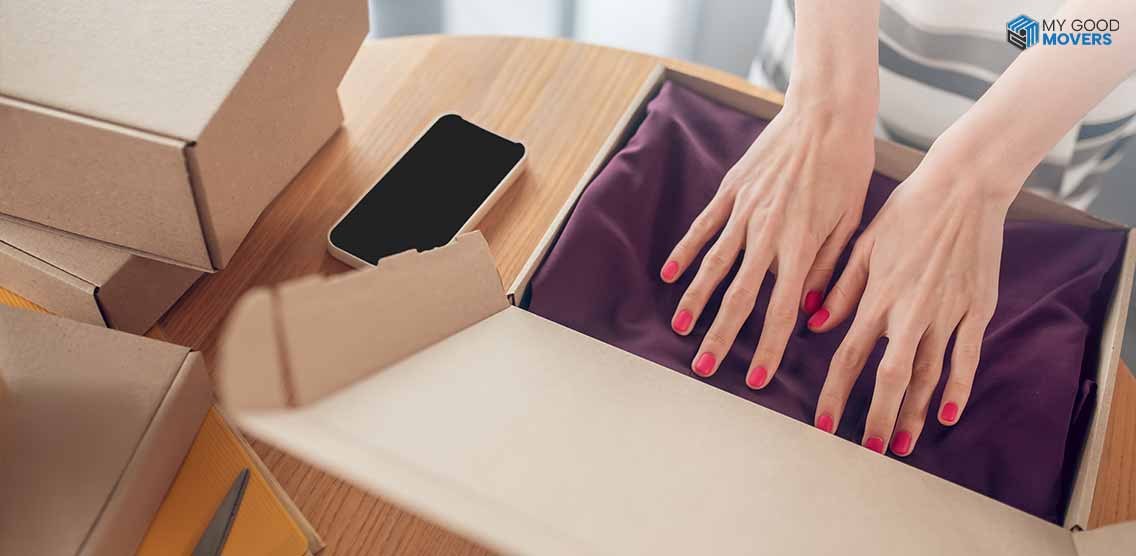We all know the excitement of starting fresh in a new home, but the thought of packing up years of belongings can be enough to make anyone want to procrastinate.
A study by the American Moving and Storage Association reveals that the average American moves 11.7 times in their lifetime.
That’s a lot of boxes, tape, and stress!
Did you know that the average cost of a local move in the U.S. is around $1,250, which can exceed $4,000 for long-distance moves?
Add to that the stress of sorting through your stuff, packing everything securely, and coordinating logistics, and it’s easy to see why packing can become one of the most overwhelming aspects of moving.
But what if we tell you that there’s a way to make the packing process less stressful, faster, and more efficient?
By using the best packing hacks for moving, you can save yourself time, money, and countless headaches.
In this blog, we’ll take a look at clever packing strategies for trips, quick packing tips, and space-saving packing hacks that will help you organize your move like a pro.
Let’s get you ready for your next big move!
Start Early and Declutter
Begin the packing process well in advance—ideally, six weeks before your move date.
This timeline allows you to sort through your belongings, decide what to keep, donate, or discard, and gather necessary packing materials.
Curious about your moving costs? Fill out the details, and we’ll calculate them for you.

Decluttering not only reduces the volume of items to pack but also lightens your load, making the move more efficient.
Gather Quality Packing Materials
Investing in sturdy boxes, packing tape, bubble wrap, and markers is essential. High-quality materials protect your items and prevent damage during transit.
Use specialty boxes for fragile items like dishes and electronics to provide extra protection.
Use Space-Saving Packing Hacks
Maximizing space in your boxes can lead to a more organized and efficient move.
Here are some effective space-saving packing methods:
1. Vacuum-Sealed Bags
Compress bulky items like blankets and winter coats by using vacuum-sealed bags. This method reduces the volume of your belongings, allowing for more efficient packing.
2. Clothes in Trash Bags
For hanging clothes, group them, cover them with a trash bag, and secure the open end with a rubber band. This technique keeps your clothes clean and organized during the move.
3. Utilize Shoe Space
Fill the inside of your shoes with socks, underwear, or small items. This not only saves space but also helps maintain the shape of your shoes.
4. KonMari Folding Technique
Fold clothes into compact rectangles that can stand upright in your suitcase or box. This method saves space and makes it easier to see and access each item without disturbing the rest.
5. Rolling Clothes
Instead of folding, roll your clothes tightly. This technique minimizes wrinkles and maximizes space, allowing you to fit more items into your boxes or luggage.
Protect Fragile Items
Wrap delicate items like glassware and ceramics in bubble wrap or packing paper. For added protection, consider using towels, sheets, or clothing to cushion these items.
This not only safeguards your belongings but also reduces the need for additional packing materials.
Label Boxes Clearly
Label each box with its contents and the room to which it belongs. Using a color-coding system can further streamline the unpacking process.
Marking boxes containing fragile items with "Fragile" or "Handle with Care" ensures they receive the necessary attention during the move.
Pack Heavy Items in Small Boxes
While it might be tempting to pack heavy items in large boxes, it's more practical to use smaller boxes.
This makes them easier to carry and reduces the risk of the boxes breaking. For instance, books and canned goods can be packed in small boxes to prevent overloading.
Utilize Suitcases and Bags
Suitcases are designed to carry heavy items and are equipped with wheels for easy transport. Use them to pack clothing, shoes, and other essentials.
This approach not only saves space but also makes transporting these items more convenient.
Disassemble Furniture
If possible, disassemble large furniture pieces to save space and prevent damage. Keep all screws and small parts in labeled bags taped to the furniture.
Taking photos of the disassembled pieces can also assist in reassembly at your new home.
Pack an Essentials Box
Prepare a box containing items you'll need immediately upon arrival, such as toiletries, a change of clothes, medications, and important documents.
Having this box easily accessible can make the first night in your new home more comfortable.
Protect Your Electronics
Before packing electronics, take photos of the wiring and connections. This visual reference will make setting up your devices in your new home easier.
Additionally, use the original packaging if available, or wrap the items securely in bubble wrap and place them in sturdy boxes.
Use Plastic Wrap for Drawers
Instead of emptying dresser drawers, wrap them with plastic stretch wrap to keep the contents secure.
This method saves time and reduces the number of boxes needed. Ensure the wrap is tight and secure to prevent items from shifting during the move.
Keep Important Documents with You
Avoid packing essential documents like passports, birth certificates, and financial records with your other belongings.
Keep them in a safe place, such as a personal bag or folder, to ensure they are easily accessible and secure during the move.
Fill Empty Spaces
One great packing tip is to make use of every available space. You can stuff shoes, cups, and bowls with smaller items like socks, scarves, or belts.
This method ensures you're not wasting any precious space, and it's a great way to organize your things.
When you fill empty spaces in boxes, you're able to optimize packing and avoid shifting during the move. Packing tips like these ensure a more organized, efficient, and stress-free move.
Use Moving Blankets
If you have delicate furniture or larger items, consider using moving blankets to protect them. These soft, padded blankets cushion your items and help prevent scratches and dents during transport.
Simply wrap your furniture in moving blankets and secure them with tape or shrink wrap.
This is an especially useful technique for packing hacks for business trips when you have office furniture or equipment that requires extra protection.
Packing Strategies for Trips with Kids
Moving with children can be an added challenge, but there are strategies to make it easier.
First, involve them in the packing process by letting them pack their small boxes or bags. Encourage them to pack their favorite toys and snacks so they feel comfortable and engaged.
Packing hacks for families can make the transition to a new home smoother and more enjoyable for everyone involved.
Maximize Your Wardrobe Boxes
Wardrobe boxes are a game-changer when it comes to packing clothes. These tall boxes with hanging bars allow you to simply transfer your clothing from your closet to the box without folding.
It's an especially useful technique for space-saving packing methods, as it helps protect your clothing from wrinkles while maximizing space in your moving truck.
Don’t Overpack Boxes
A common mistake people make while packing is overfilling boxes. Packing too much into one box can lead to broken boxes, damaged items, and an inefficient packing process.
Instead, balance out the weight by spreading out your heaviest items across several boxes.
This way, you'll also avoid overloading your back or risking injury while carrying the boxes.
Organize Boxes by Room
When packing, keep items that belong to the same room in the same box.
Label each box with the room it's going to, so you don't waste time searching for things when you arrive at your new home.
You can even take it a step further by listing the contents on the side of the box, so you're not opening multiple boxes looking for one specific item.
Make Use of Digital Inventory
A useful tip is to create a digital inventory of your belongings. Taking pictures of valuable items and recording their descriptions can help you track everything during your move.
If anything goes missing or gets damaged during transit, this inventory can be helpful for insurance purposes.
It’s also a great way to get rid of unnecessary items by doing a digital declutter before packing.
Packing Hacks for Vacations vs. Moving
While packing for a vacation might seem like a less stressful task than moving, both require efficient packing techniques to avoid overpacking or forgetting essentials.
When packing for a vacation, consider rolling your clothes, using travel cubes, and making a packing list. The main goals for moving are efficiency and organization.
Whether you’re moving for a job or moving homes, the right packing strategies can save you time, effort, and money.





